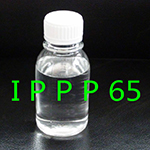Halogen-antimony flame retardant
Halogen-antimony flame retardant is a compound flame retardant system with halogen-containing organic compounds and Sb2O3 as the coactive agent. The flame retardant effect of halogen-antimony flame retardant is mainly the flame retardant of the gas phase.
Halogen - antimony flame retardants containing halogen flame retardants in combustion process is decomposed into HX, and with polymer burning HO · HX, O ·, OH · highly reactive free radicals reaction, generating active low halogen free radicals, to slow or stop the burning, the reaction is as follows:
HX + h. - H2 + X ·
HX + X + o. - HO · ·
HX + HO · - H2O + X ·
As the density of HX is larger than air density, except for the above reaction, it can also dilute the oxygen in the air and cover the surface of the material, which can reduce the burning speed. The water produced in the above reaction absorbs the heat of combustion and is vaporized, and water vapor ACTS as an oxygen trap.
The Sb2O3 in the flame retardant system itself does not have a flame retardant effect, but in the combustion process, it can react with HX to generate three halide antimony or halogenated antimony. The reaction process is as follows:
Sb2O3+HX (gas) +H2O
Sb2O3 (solid) +HX (gas) SbOX (solid) +H2O
Sb2OX (solid) Sb4O5X2 (solid) +SbX3 (gas)
Sb4O5X2 (solid) Sb3O4X (solid) +SbX3 (gas)
Sb3O4X (solid) Sb2O3 (solid) +SbX3 (gas)
The synergistic effect of Sb2O3 can be seen from the above reaction.
The density of SbX3 steam is large, and it can stay near the surface of the burner for a long time. It has the effect of diluting air and coating.

Isopropylphenyl Phosphate(IPPP65) Uses:
Isopropylphenyl Phosphate, Flame Retardant IPPP65 Halogen-Free Phosphate Flame Retardant Plasticizer, Will Not Twice Pollute The Environment; In The Phosphate Ester Species Is A Viscosity, Phosphorus Content Is More Moderate A Model. This Product Is Colorless And Transparent, Good Compatibility, The Use Of Both Flame Retardant And Plasticizer, In The Flame Retardant And Plasticizer To Play A Balance Between The Role, But Also To Make The Processing Of The Same Material And Its Physical Properties.
The decomposition process of halogenated antimony is an endothermic process that can effectively reduce the surface temperature of the polymer.
The SbX3 can react with the free radical in the gas phase, thereby reducing the reaction heat and quenching the flame.
SbX3 X, + SbX2,
SbX3 + CH3, CH3X + SbX2,
SbX2, + h. SbX, + HX
SbX2 + CH3, CH2X, + SbX ·
SbX + h. Sb + HX
SbX, + CH3, CH3X + Sb
The Sb in the above reaction can be formed by the production of the SbO and water in the gas phase, which can help to terminate the combustion.
Sb + o. SbO + M + M
Sb + h. + M SbO + H2 + M
SbO + h. SbOH
SbOH + h. SbO · + H2OHalogen flame retardant can be divided into chlorine flame retardant and bromine flame retardant.
(1) the chlorine flame retardants is cheap, but its thermal stability is poor, applies only to products processing temperature below 200 ℃.
(2) the bromine flame retardants flame retardant efficiency is high, is the double of chlorine is flame retardant, so relatively less dosage, and due to its good and mutual capacitance matrix resin, the mechanical properties of the material effect is small, there is a very important position in the field of flame retardant.
Halogen flame retardant under the condition of burning residue after the decomposition of HX can promote the dehydration carbonization of polymer materials, flame retardant of carbonized layer formation, reduce the generation of low molecular weight pyrolysis product, hinder the normal conduct of combustion reaction. Halogen-retardant flame retardant effect is good, the addition quantity is small, the performance of the material is small. But the amount of smoke is large, the halogenated hydrogen gas is corrosive, and it can produce the toxic carcinogenic substance polybromoprene and the dibenzofuran, which affects the normal metabolism of human body.
Copyright: Zhang Jia Gang YaRui Chemical co.,Ltd
http://www.yaruichem.com
-
Isopropylphenyl Phosphate(IPPP50)
-
-
Tris(2-chloroisopropyl)Phosphate(TCPP)
-
-
Triphenyl Phosphite (TPPI)
-
-
Triphenyl Phosphate (TPP)
-
-
Triethyl Phosphate (TEP)
-
-
4-Chlorobenzoic acid (PBCA)
-
-
Dimethyl thiotoluene diamine(DMTDA)
-
-
Diethyl toluene diamine(DETDA)
-
-
9-anthracene
-
-
Trimethyl Phosphate (TMP)
-
-
Isopropylphenyl Phosphate(IPPP65)
-
-
Antioxidant Stabilizers|Defoamers|Penetrants
-
-
Isopropylphenyl Phosphate(IPPP35)
-
-
Tris(2-butoxyethyl)phosphate(TBEP)
-
-
Trixylyl Phosphate(TXP)
-
-
4,4'-Methylenebis(N-sec-butylaniline)-MDBA
-
-
Diphenyl Isooctyl Phosphate-DPOP-S141
-
-
Diphenyl Isodecyl Phosphate-DPDP-S148
-
-
Cresyl Diphenyl Phosphate(CDP)
-
-
Tris(1,3-Dichloro-2-Propyl)Phosphate
-
-
Curing Agents|Chain Extenders|Crosslinking Agents
-
-
2,2-Bis(Hydroxymethyl)Propionic Acid|DMPA
-
Poly(1,4-Butanediol) Bis(4-Aminobenzoate)|P-1000
-
3-Hydroxyethyloxyethyl-1-Hydroxyethylbenzenediene
-
1,3-Bis(2-Hydroxyethoxy)Benzene|HER-Solid
-
Chain Extender HQEE-Liquid
-
Hydroquinone Bis(2-Hydroxyethyl)Ether|HQEE-Solid
-
4,4'-Methylene-bis (3-chloro-2,6-diethylaniline)
-
Alicyclic Amine Curing Agent Chain Extender HTDA
-
Triallyl Isocyanurate|Crosslinker TAIC
-
2,2-Bis(Hydroxymethyl)Butyric Acid|DMBA
-
4,4'-Methylenebis(2-Ethylbenzenamine)|MOEA
-
4,4'-Methylenebis(2,6-diethylaniline)|MDEA
-
4,4'-Methylenebis(2-ethyl-6-methylaniline)|MMEA
-
4,4'-Diaminodicyclohexyl Methane|PACM,HMDA
-
Cycloaliphatic Curing Agent Chain Extender MACM
-
3-Chloro-3'-Ethyl-4,4'-Diaminodiphenylmethane
-
-
Flame Retardants|Plasticizers
-
-
Isopropylphenyl Phosphate(IPPP95)
-
-
Trihexyl Phosphate(THP)
-
-
Triisobutyl Phosphate (TIBP)
-
-
1-Phenyl-3-Methyl-5-Pyrazolone(PMP)
-
-
Tris(2-chloroethyl)phosphate(TCEP)
-
- News List
-
It ACTS as an auxiliary antiox -
The properties of phenolic ant -
Amine antioxidants -
Thermoplastic anti-oxygen agen -
Plastic auxiliary antioxidant -
Molecular structure of antioxi -
High polymer antioxidants -
General-purpose plastic antiox -
Phosphoric acid ester auxiliar -
Antioxidant compound products -
Polypropylene complex antioxid -
Compatibility of antioxidants -
Industrial plastic composite a -
An antioxidant for polymers -
PVC resin antioxidant














